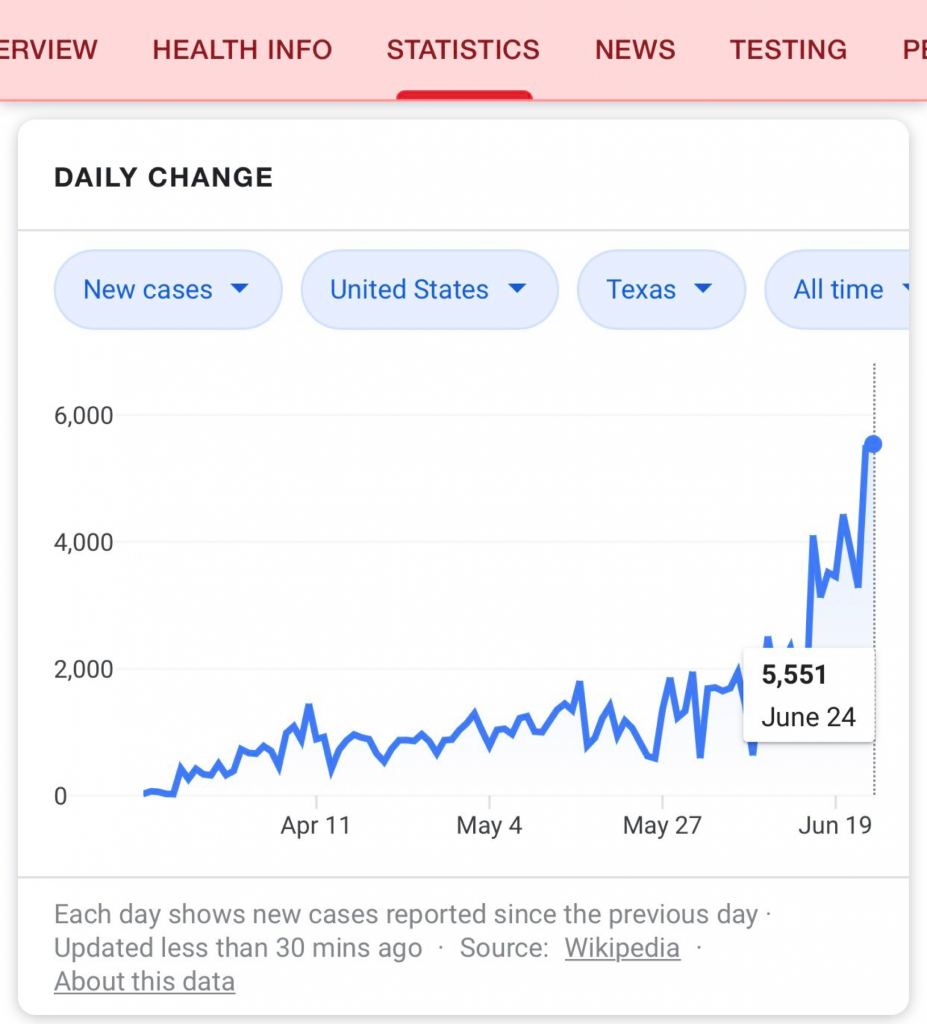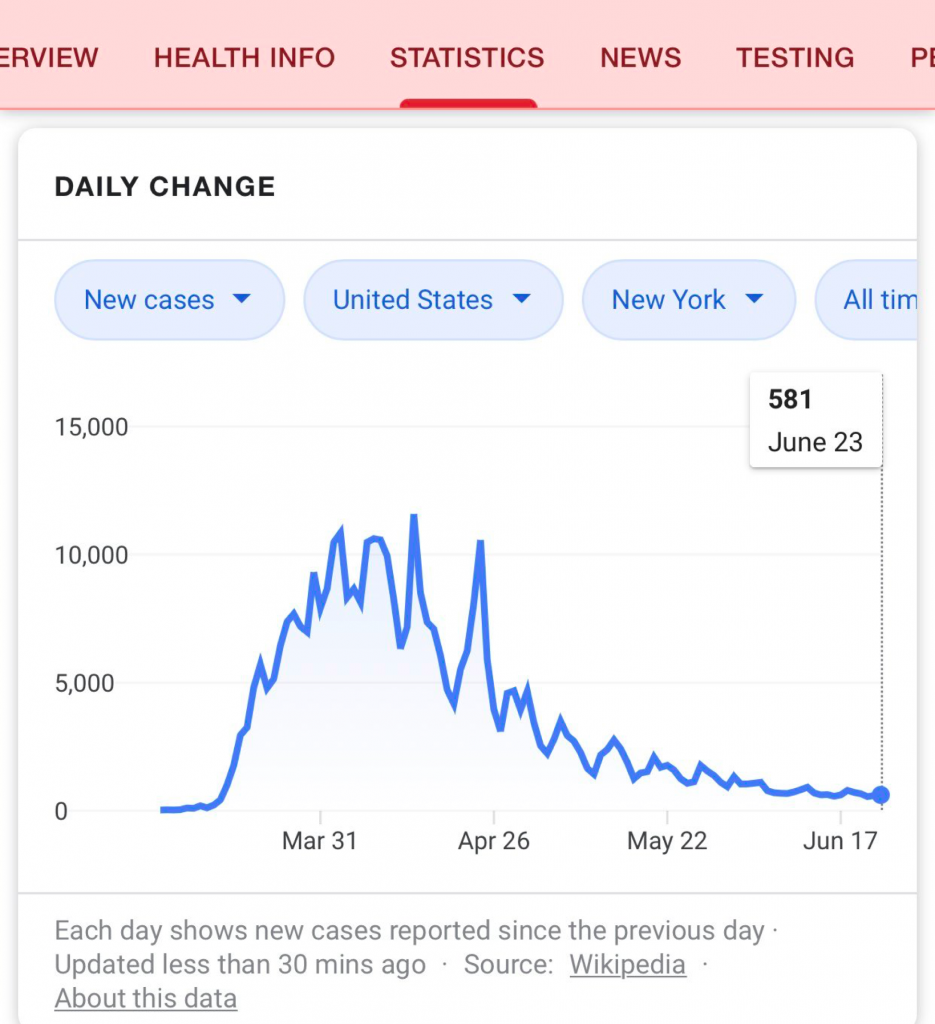The pandemic crisis management draws a sharp contrast between the leadership of the United States and that of the European Union.
The population of the European Union is 100 million people larger than that of the United States. The difficulties of coordinating policies and responses among sovereign nations could be even harder than the complexities of the U.S. federal political and legal system. Yet the results speak for themselves. Europe is successfully emerging from the pandemic, while the United States, as explained by Dr. Anthony Fauci (without doubt the country’s leading expert and voice of reason in this administration), is knee deep into the first wave, not yet in what could be the second wave of this pandemic.

The past few weeks, the State of Florida alone registered more new cases of COVID-19 that the whole Europe. While all of the governments in the European Union have managed to control the virus, moving into safe reopenings of their economies and social lives (not without prudence and light mitigation, social distancing and mask use mandates), the United States is seeing the virus peak in 39 states that did not coordinate mitigation efforts, while New York and other states in the nation struggled and showed the way (out of experience) on how to handle this serious threat.
The contrast between the evolution and management of the coronavirus pandemic between the country as a whole, or states like Florida and Texas (to mention a sample of mismanagement by governors), and the situation coming under control in other places like New York State, is revealing of the best practices to follow in order to manage this healthcare crisis and its impact on the economy, like these charts demonstrate:




The White House has moved from total denial to erratic use of its federal authority to ensure adequate policy coordination, back to politicizing the management of the pandemic. The key of its sharp failure has been not listening to science and experts, evading data and not reconciling the sanitarian measures with the economic impact in an appropriate manner. The more erratic the sanitarian response, the longer the pandemic, and with that, the more profound its socioeconomic impact. Just like when a patient does not follow protocol to recover from an illness or surgery, his health becomes compromised for a longer period, thus making the impact on his family’s economics worse.
On the other hand, the White House has also failed with the implementation of the CARES Act. For instance, only 12% of minority owned business got access to the Paycheck Protection Program, precisely one of the segments of the small business conglomerate that had less resilience to the inevitable confinement and mitigation sanitarian measures, therefore triggering high unemployment in African-American and Latino populations. The administration obsesses over the securities markets and Wall Street indexes that have not surpassed volatility, while the real economy walks in absolute uncertainty over the future of the COVID-19 pandemic. And finally, the administration continues to undermine the Affordable Care Act in the middle of a pandemic, jeopardizing the coverage available to millions whose health could be impacted.
As we walk into the fall without a vaccine, COVID-19 will concur with seasonal flu and a potential spike in coronavirus contagion, making decisions such as the return to schools and colleges more complex and, as never before, driven by science, data and trends in order to implement the correct approach to defeat the virus. On the other hand, in any situation that combines online education with school presence, as well as safe economic reopening per the conditions prevailing in each community, it would be needed to implement measures like scaling free testing, contact tracing, self-quarantine (or restrictions) for those moving between higher risk to lower risk geographical areas, and wearing mask mandates.
Let’s use the case of schools reopening. President Trump has said he will cut federal funds to school districts not fully reopening (a threat of doubtful legality) citing that countries like Germany, Denmark, Norway and Sweden will reopen schools. The fact is that the latter countries are registering much lower new cases per day than the United States. For example, Germany has a seven-day average of 365 new cases per day, while the United States surpasses 52,639 new case per day in a seven-day average. The averages of per day cases are much lower in the other cited countries.
The United States became, out of lack of leadership and mismanagement, the planet’s epicenter of the COVID-19 pandemic. Instead of leading the world, it has withdrawn from the World Health Organization, precisely when best practices, cooperation for mutual benefit, and global vaccine or treatment research is most needed. The prospects of “flattening the curve” and furthermore seeing a sharp decrease in the virus spread are far in the United States. Therefore, it is just time we listen to science and stop making of this pandemic a political stunt, costing so far 135 thousand lives, given the fact that the mortality rate of this virus is averaging almost 5%, which means that if we are adding 55,000 case on a given day, we could see another 2,500 dead out of those newly infected.
Photo: Carlos Barria/Reuters
